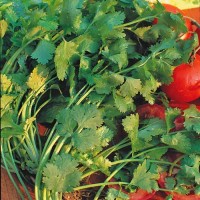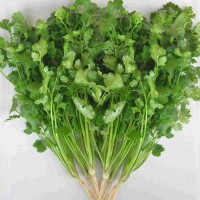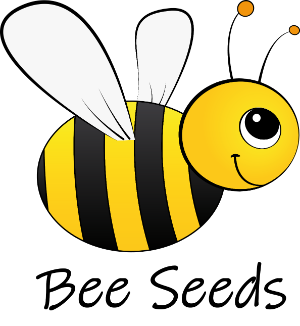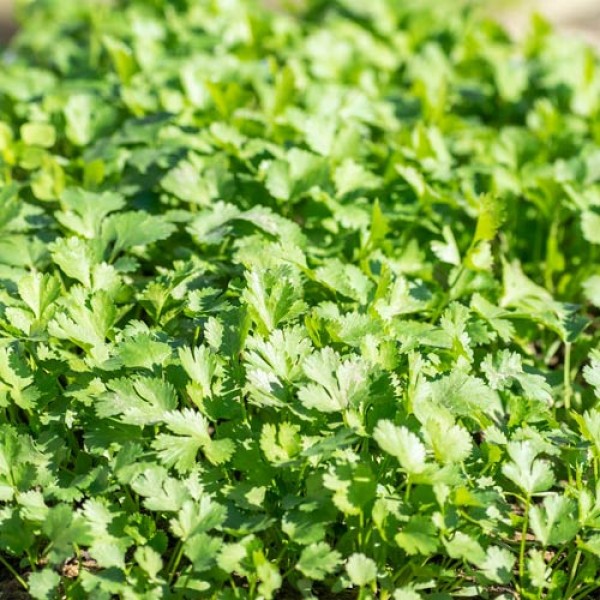Grow your own cilantro
Tips for sowing coriander in your own garden
The characteristic smell of coriander, whose Latin name means "bug herb", divides our epicurean world. The reason for this is our genes, whose code makes the light green herb smell pleasantly fresh and spicy with a background aroma of orange, lemon or even with nutty hints heavenly for some. For the others, which is about 17% of the European population, coriander smells repulsive, soapy and stinging.
Location
Coriander/Cilantro belongs to the umbelliferae famly (Apiaceae). Originally, it comes from the Mediterranean region and the Middle East. There it was already used 2,000 years ago - so already in the tomb of Tutankhamun (1325 BC) coriander seeds were found.
Coriander is very versatile and all parts of the plant are edible. Depending on which part you prefer to harvest, a different place in the garden is recommended.
If you prefer to harvest the seeds of coriander, treat it to a full-sun location. Here it blooms particularly early and abundantly. For leaf harvesting, you should rather choose a semi-shaded location. Coriander does not tolerate frost and drought well, at the first frosts the plant dies of frostbite, the seeds are frost hardy.
Always keep the soil well moist. If you want to plant cilantro in a herb spiral, the lowest zones are suitable here.
Since cilantro is a heavy feeder, it needs a humus-rich soil. Before sowing or planting, dig in a shovel of compost or fertilize the soil. Always make sure the soil is loose to prevent waterlogging.
Sowing
Coriander can be grown without problems in pots and tubs in the house or on the terrace. For sowing, it is best to use a 12 cm pot, in which you place three seeds in 1 cm deep holes with a spacing of 2 cm and cover them with soil. When the seedlings are about 5-7 cm tall, you can separate them into 20 cm pots.
In the garden, sow the seeds in late spring in 1 cm deep furrows in rows 30 cm apart after all danger of frost has passed in May. The seedlings will appear after about 2 weeks. Once the seeds have germinated, you can separate the plants to about 30 cm apart. Since birds like to eat the seeds of coriander, you should cover them with fleece or netting. Coriander germinates regardless of light.
Care
Coriander is quite undemanding. As a young plant, you should water it regularly, but avoid waterlogging and drought. If cilantro stands too dry, it will shoot up and form a premature, stress-induced emergency bloom. This can significantly shorten the harvest time for cilantro greens. If you are planting cilantro in a pot, be sure to provide good water drainage to prevent the roots from rotting. Once the coriander seeds mature, there is little need to water the coriander. This is because the coriander`s water requirements drop sharply towards the end of summer.
Flower
From June to July, flat flower umbels appear on the stems. Each individual flower contains five white to cream-coloured petals, which contain about three to five pink to rarely white flower stigmas. These umbel flowers of coriander are very popular with many insects, including hoverflies, bees and wild bees. This is not only good for the environment, but also for your garden. If coriander is allowed to flower, it can grow up to three feet tall.
Protection from pests and diseases
Coriander contains a variety of essential oils that have a repellent effect on insects. For this reason, coriander is rarely attacked by pests. However, there are species of bugs that suck the tender leaves and cause it to wither. Therefore, as a preventive measure, you should not plant cilantro where there has been a previous bug infestation. For control, you should look at the weeds in the area and remove infested plants.
With its typical scent, cilantro attracts beneficial insects to the bed, but drives away pests such as the cabbage aphid, cabbage white butterfly, aphids, spider mites and Colorado potato beetles. The plant is therefore ideal for protecting other plants in the bed.
Cilantro can also be attacked by fungi and bacteria. Look for rust spots and wilted leaves. You can take precautions by not placing individual plants too close together so that the stand is well ventilated.
Harvest
Harvest the tender leaves of coriander continuously throughout the season until mid-September. As soon as the coriander flowers, it loses its aroma. If you want to harvest primarily the leaves, you can plant the coriander in the shade / partial shade, so it comes later to bloom. To prevent the coriander from putting its energy into the seeds, you should cut off the umbels before the white flowers appear.
Harvest the seeds just before they turn completely brown. Otherwise, the seeds may fall off the inflorescences and you may lose a lot of harvest unnecessarily. Cut them off near the ground and hang them in bunches of three to five stems in a warm, dry place where they can still ripen. When still green, the seeds taste unpleasantly bitter and should not be used. When the seeds are completely brown and dry, they gain their characteristic fine spicy sweet aroma. You can now strip the round, ridged globules from the cones with your whole hand. Provided that the seeds are well dried, the coriander seeds can be stored well in screw jars for several years.















